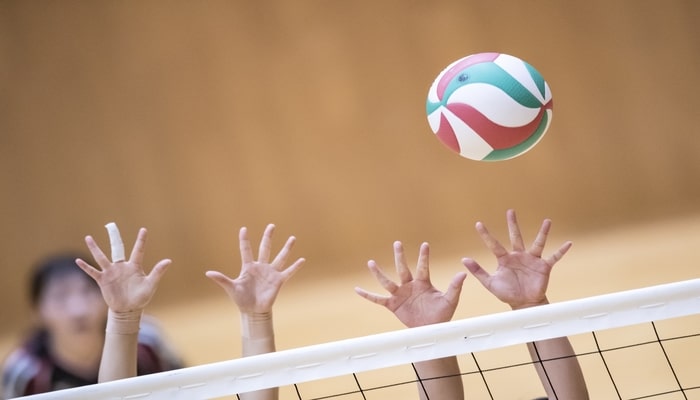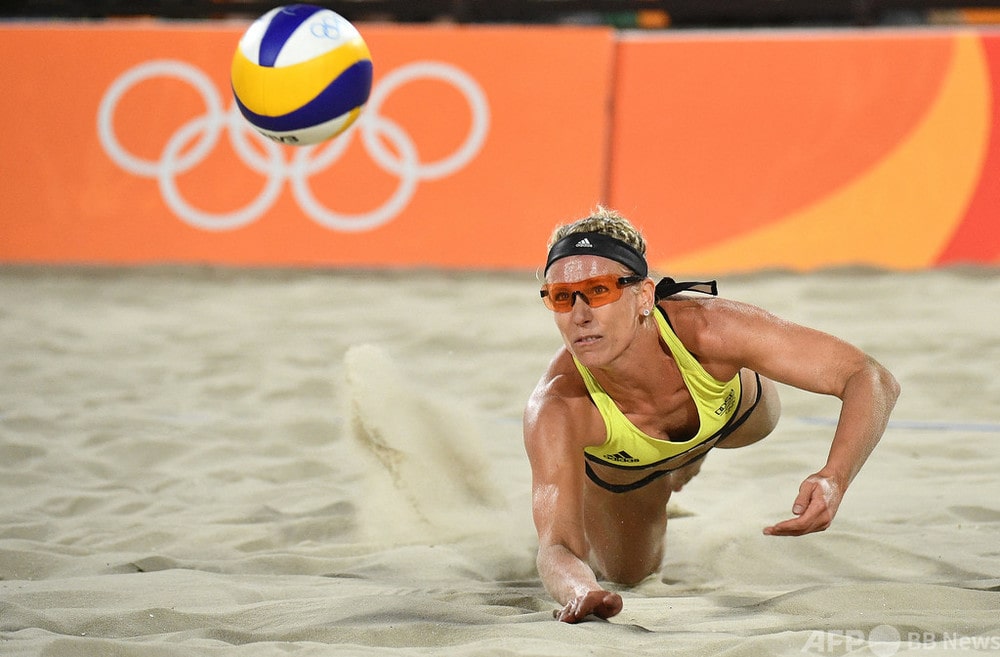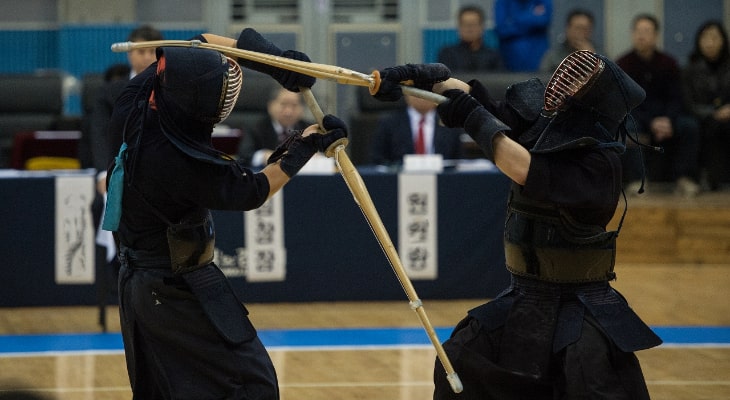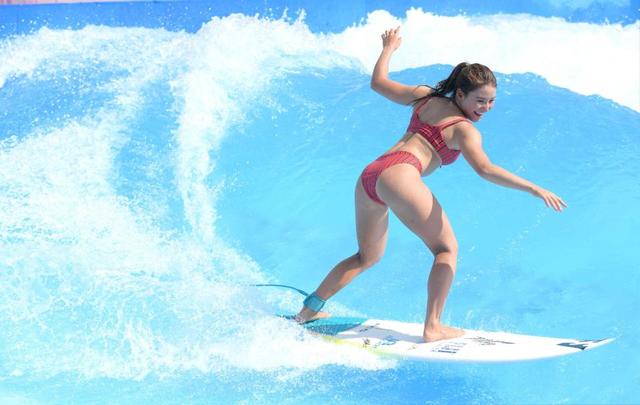
Blocking in volleyball is an important technique that prevents the opponent’s attack and creates scoring opportunities for your team.
Effective blocking requires technical knack and strategic understanding.
Here, we will explain in detail the tips for blocking in volleyball.
目次
Volleyball blocking tips
1. Correct stance
- Foot position: Spread your feet slightly wider than shoulder width, bend your knees slightly, and tense your lower body. You can quickly jump up from this stance.
- Weight distribution: Keep your weight on your toes and be ready to jump forward at any time.
2. Determine the timing
- Observe your opponent: Carefully observe the attacker’s movements and predict the timing of his spike.
- Jump timing: Jump at the moment your opponent starts hitting. If you’re too early, you’ll miss, and if you’re too slow, you won’t be able to block in time.
3. Effective arm action
- How to extend your arms: At the moment you jump, extend your arms high, with your palms facing your opponent’s court. Maximize block height and width.
- Hand position: The hand is open to catch the ball, and the fingers are spread to block the opponent’s spike course.
4. Block positioning
- Distance to the ball: Try to block from the optimal position, neither too close to the net nor too far away. This will increase your chances of successfully blocking into the court.
- Read the court: Read the opponent’s attack pattern and the setter’s intentions, predict the position of the block, and move.
5. Collaborate with your team
- Block coordination: By communicating closely with teammates and performing cooperative blocks, you can cover a wide range of attacks.
- Collaboration with the defense: We will also consider supporting the defensive line in the event that a block cannot be decided, and we will share positioning and signs.
6. Improvement through practice
- Repetitive practice: Blocking requires a lot of practice because it requires technical precision and judgment. Practice blocking against various attack patterns to develop reaction speed and judgment.
summary
Blocking in volleyball is a complex technique that requires skill, timing, and strategic understanding, not just reflexes and strength.
Achieve effective blocks by learning proper form, observing your opponent, and working with your team.

Valley block types
The main types of blocks in volleyball are as follows.
These blocks can be used depending on the attacking tendencies and tactics of your team.
1. Single block (1 block)
- Description: A block performed by one player. Mainly, the blocker on the same side does it alone against the side attacker’s spike. It is used when it is necessary to cover a wide area of the field or to prevent a fast attack from a serve-receive.
2. Double block (2 blocks)
- Description: This is a block where two players work together. It is usually played by the center player and side players working together. Double block has the effect of narrowing the attack range and is effective against the opponent’s main attacker.
3. Triple block (3 blocks)
- Description: This is the most powerful block made by three players working together. It is mainly used when the opponent’s powerful attacks or attack points are easy to predict. Triple blocks are very effective at stopping attacks close to the net, but they also come with great risks. Therefore, it is necessary to carefully consider the defensive balance of the team when using it.
4. Reading block (Guess block)
- Description: This block is executed at the optimal timing and position by reading the attacker’s movements and the setter’s intentions. Read blocking is an advanced technique that requires experience and insight from the blocker, and requires a good understanding of the opposing team’s attack patterns to execute effectively.
5. Swing block
- Description: A blocking technique in which the blocker swings his arms wide. This behavior maximizes the reach and height of the block, allowing it to cover a larger area. Swing blocks are especially effective against high balls and powerful spikes.
Each of these blocks is suitable for different situations and tactics.
It is important for players and teams to practice these blocking techniques and choose the most effective blocking method during a match.
How to block in certain situations
Blocking in volleyball is an important technique to directly prevent your opponent’s attacks.
Learning how to block effectively in certain situations is essential to improving your performance in matches.
Here we discuss some common situations and corresponding blocking methods
1. Dealing with powerful spikers
- Use double or triple blocks : Against strong spikers, it’s a good idea to try joint blocks with two or three people instead of just a single blocker. This increases the range of the block and makes it easier to prevent spikes.
- Adjusting the timing : If the spiker is powerful, the timing of the block is very important. By delaying the timing of your jump, it will be easier to block in time with the spiker’s hit point.
2. Responding to back attacks
- Adjust positioning : For back attacks, it is effective for the central blocker to move back a little to respond. This will allow you to properly block attacks from behind.
- Angle of Block : When blocking into a back attack, angle your hands toward the center of the court to increase the chance of the ball landing in the opponent’s court.
3. Responding to quick attacks
- Anticipation and Reaction Speed : Quick attacks are fast, so the blocker must anticipate the setter’s movements and react quickly. Read the signs of a quick attack from the setter’s hand movements and the attacker’s running style.
- Compact Block : For a quick attack, try a compact but effective block by quickly jumping and moving your hands closer to the net.
4. Support for combination play
- Communication and Coverage : Communication with teammates is key when blocking combination plays. Clarify which players mark which attackers and strengthen defensive coverage after blocks.
- Flexible positioning : When there are multiple attack options, the blocker has the flexibility to change position to cover possible attack routes.
By understanding how to block for these situations and incorporating them into your practice, you can become a blocker who can respond to a variety of attack patterns.
The key is to predict your opponent’s attack intentions and block with the right timing and positioning.
How to practice blocking in volleyball
Blocking in volleyball is an important technique that increases the team’s defensive ability. Effective blocking requires timing, positioning, and coordination.
Below are some practice methods to improve your blocking technique.
1. Basic form practice
- Purpose: Learn correct block form.
- How to do it: Take a stance in front of the net with your feet shoulder-width apart and your knees slightly bent. Extend your arms upwards and jump with your palms facing the direction of the net. When landing, keep your knees soft and try to land safely.
2. Practice timing
- Purpose: Improve block jump timing.
- How to do it: Have your partner or coach hit a spike and time your blocks to match the spike. Start at a slow speed and gradually move to a speed closer to actual combat.
3. Reading block practice
- Purpose: Develop the ability to read an attacker’s movements and block them effectively.
- How: Prepare multiple attack patterns so that the blocker can respond appropriately to any attack. Practice reading the attacker’s intent from small cues such as the swing of the attacker’s arms, the direction of the body, and the setter’s movements.
4. Team block practice
- Objective: Improve the ability to perform coordinated blocking with multiple players.
- How to do it: Coordinate with your teammates to perform double and triple blocks. Practice building effective block formations according to your opponent’s attack patterns. We aim to cover the net without gaps while communicating.
5. Shadow Block
- Purpose: To make your body remember the block movements by repeating them.
- How to do it: Use a net or wall and repeat the blocking motion even without an actual ball. Practice while focusing on each element of the block, such as jump height, hand position, and body orientation.
6. Video analysis
- Purpose: To objectively evaluate the form and timing of your blocks and find areas for improvement.
- How to do it: Record a video of your practice or game and watch it later to analyze your blocking movements. In particular, pay attention to the timing of jumps, use of hands, and positioning, and look for areas that can be improved.
In order to improve your blocking technique, it is important to start by learning the correct form and practice repeatedly in a form similar to the actual play.
Collaboration with teammates and coaches is also essential, so practice while valuing communication.
For those who don’t have the right timing to block in volleyball
If you’re having trouble timing your blocks, consider the advice below. The key to improving your timing is observation, reaction time, and practice.
1. Thoroughly observe the other person
- Read your attacker’s movements: Predict the timing of your attack based on your attacker’s approach, jumps, and arm swings. The setter’s movements are also important clues, so pay attention to the speed and direction of the set ball.
2. Practice jumping
- Increased jump power: Increase your jump height to increase your block success rate. Also, as your jumping power increases, it becomes easier to adjust your timing.
- Repetitive practice: By practicing the block movements repeatedly, your body will memorize the timing.
3. Return to the basics of blocks
- Check your form: Maintaining correct block form is important for timing. Check out the basic movement of stretching your arms, pointing your palms toward your opponent’s court, and jumping firmly at the edge of the net.
4. Video analysis
- Review your play: Record video of your practice or game and analyze the timing of your blocks. Objectively judge whether you are jumping too fast or too slow and think of ways to improve it.
5. Accumulate small successes
- Step-by-step goal setting: Start by practicing blocking with easy attacks and gradually increase the difficulty so you can confidently time your attacks.
6. Cooperation with teammates
- Communication: Improving collaboration with teammates is also essential to block success. Share information about the attacker’s movement and set direction, and time your coordinated blocks.
7. Strengthen your mental health
- Positive Mindset: It is important to approach practice with a positive mindset and not be afraid of failure. Blocking is a difficult technique, so it is important to persevere.
Mental health for successful blocking
Successful blocking in volleyball is not only about technique but also mentally.
Blocking is aimed at directly stopping the opponent’s attack and can provide a psychological advantage for the team.
The following are important elements of the block’s mental aspect
1. Confidence
- Blocks must be approached with confidence. Believing that you can block is the basis for actually successfully blocking. It is important to jump with confidence and be willing to establish your dominance on the net.
2. Positivity
- You are required to challenge blocks with a positive attitude. You must have the heart to take on challenges without fear of blocks or failure. Being aggressive can put pressure on the opposing attacker and induce mistakes.
3. Concentration
- High concentration is required to predict the movements of the opponent’s setter or attacker and jump at the right time. You cannot afford to relax even for a moment, so it is important to maintain a high degree of concentration at all times while playing.
4. Resilience
- No matter how good a blocker you are, you can’t block every attack. Your resilience will be tested in how you bounce back when you fail. The ability to focus on the next play and not get hung up on negative outcomes is extremely important for blockers.
5. Teamwork and communication
- Blocking is a play that requires not only individual skill but also team cooperation. Successful blocking depends on good communication with teammates. It’s important to coordinate with your teammates and plan to maximize the effectiveness of your blocks.
6. Flexibility
- The opposing team’s attack patterns and strategies may change during the game, so flexible thinking is required. The ability to change blocking strategies depending on the situation is one of the characteristics of a good blocker.
In order to be successful at blocking, it is very important to cultivate these mental elements and apply them during play.
As well as technical practice, strengthening your mental side can help you become a more effective blocker.
Getting the timing of your blocks right doesn’t happen overnight.
Practice patiently and improve little by little. The most important thing is to believe in your own growth and keep taking on challenges.

![A thorough explanation of the rules of beach volleyball! How is it different from indoor volleyball? [From beginner to advanced]](https://planotatico.com/wp-content/uploads/2024/03/img_f30fa028b697a80811bb685537898f2998980-min.jpg)


